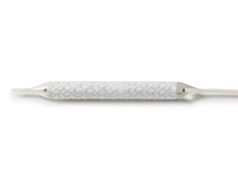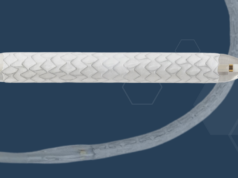
To prevent surgical site infections (SSI) during abdominal aortic aneurysm repair surgery, a mainstay, widely-spread approach is to dip stent grafts in rifampicin before implantation. However, new research indicates that this approach could contribute to the global emergence of multi-drug resistant bacteria.
Xavier Berard and Fatima M’Zali (both Bordeaux, France), have been investigating this danger, conducting in vitro investigations showing resistance to rifampicin developing in seven days in several bacterial species. Moreover, latest preliminary results simulating reinfection with Staphylococcus aureus and Staphylococcus epidermidis rifampicin resistant mutants demonstrate no activity of this drug against the resistant mutants.
In vascular surgery, vascular graft infections are associated with high rates of mortality and amputation. The dipping of grafts in rifampicin before implantation has emerged as a popular way to avoid such infections. However, there is little consensus on the concentrations used or the duration of soaking, while this also adds an extra step of manual handling. “This method has a high potential of resistance emergence,” Mzali argues. “Resistance emerges quickly towards rifampicin as this is due to a genetic change in the β subunit of bacterial RNA polymerase.”
“Infectious diseases are amongst the leading causes of death worldwide,” M’Zali says. Before 2000s, multi-drug resistant bacteria were confined to hospitals. Since then, however, they have started appearing elsewhere. “The emergence and dissemination of multi-drug resistant organisms in hospitals, animals and wider communities now constitutes a global health threat,” Mzali explains. There is currently a limited number of new active antimicrobial drugs on the market, especially those designed to act against Gram-negative bacteria (such as ESBL and carbapenemase producers). ESBL producers E. coli are resistant to all beta-lactams antibiotics except to carbapenems. These strains are often resistant to other families such as quinolones and aminoglycosides. The treatment option for infections due to ESBL producers is the use of carbapenems. However, there are nowadays growing number of reports of carbapenemase-producing strains spreading globally against which the treatment option involves colistin in combination with other drugs including rifampicin or carbapenems. However, as of 2015, colistin resistance has started to emerge.

“The epidemiology of infections is quite rare, varying in different locations,” Berard says. “For EVAR, the rate ranges from 0.2–5%.” Patient characteristics, the type of operation and post-intervention occurrences all contribute to situations in which the risk is especially high.
Following on from a previous 2015 study which looked at infection in the first 24 hours post-intervention, Berard and Mzali have conducted a seven-day in vitro assessment in which four Getinge grafts—INTERGARD, INTERGARD SILVER, INTERGARD SYNERGY (with silver and triclosan) and INTERGARD soaked in rifampicin—were tested against several microorganisms.
Screening for development of rifampicin resistance was conducted by mean of time kill assays over a seven days period with time slots for microbiological screening at T0H, T24H, T48H, and T7 days.
For the MRSA reference strain (ATCC origin), rifampicin proved to be bactericidal. When using a rifampicin resistant MRSA strain of clinical origin, rifampicin-soaking of the graft proved to be ineffective. Additionally, as expected the effectiveness of rifampicin soaking was not demonstrated when testing a Candida albicans strain as rifampicin does not have activity against fungi.
Summarising their seven-day findings, Berard explains, “There was a persistence of optimal antimicrobial efficacy of the INTERGARD SYNGERY graft out to seven days for all tested microorganisms.
Rifampicin, though active over 24 hours, rapidly lost its efficacy over time as resistance emerged. In summary, the results of this in vitro study, demonstrated that INTERGARD SYNERGY is more effective than rifampicin-soaked grafts”.
M’Zali and Berard suggest that control of multi-drug resistant bacteria requires stringent infection control measures including isolation of any infected patient. Rapid diagnostic methods to promptly identify patients at risk of such bacteria need to be developed, and guidelines for a more rational use of antimicrobials are being developed. Antimicrobial-treated medical devices could also be used to supplement infection prevention programmes.
The take-home message, Mzali and Berard explain, is that physicians should stop soaking grafts in rifampicin and steer away from all conventional antibiotics used for therapy to avoid compromising their clinical usage and use ready-made commercialised impregnated grafts (such as INTERGARD SYNERGY; Getinge) that provide coverage for Gram-positive and Gram-negative bacteria and fungi. Berard says, “We need rifampicin, but not during intervention. We need it during postoperative treatment as an antibiotic in combination with others.”
This article was supported by Getinge.












